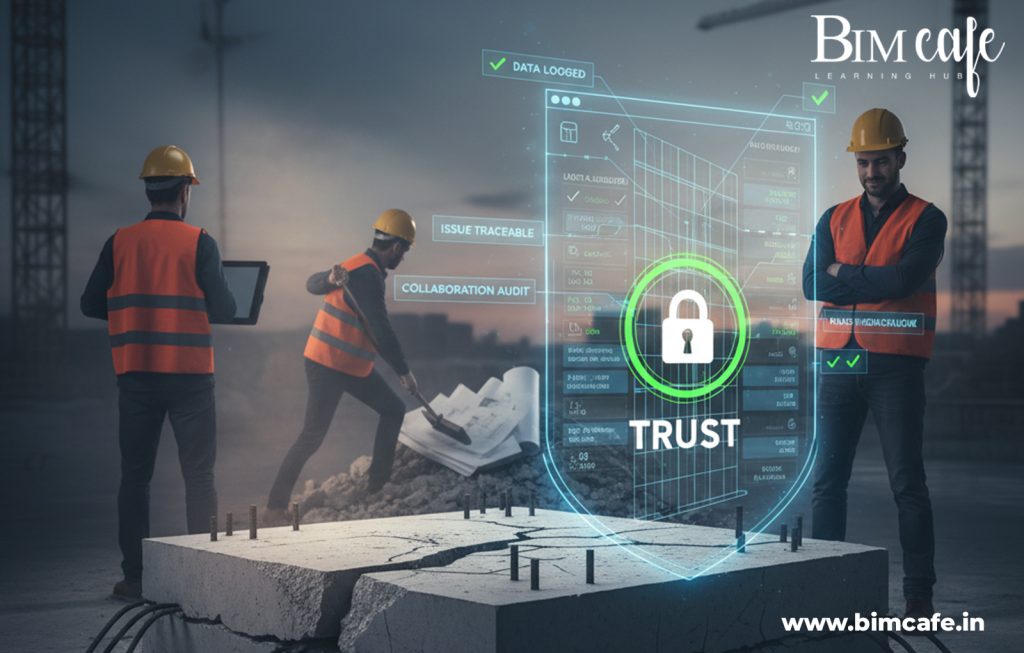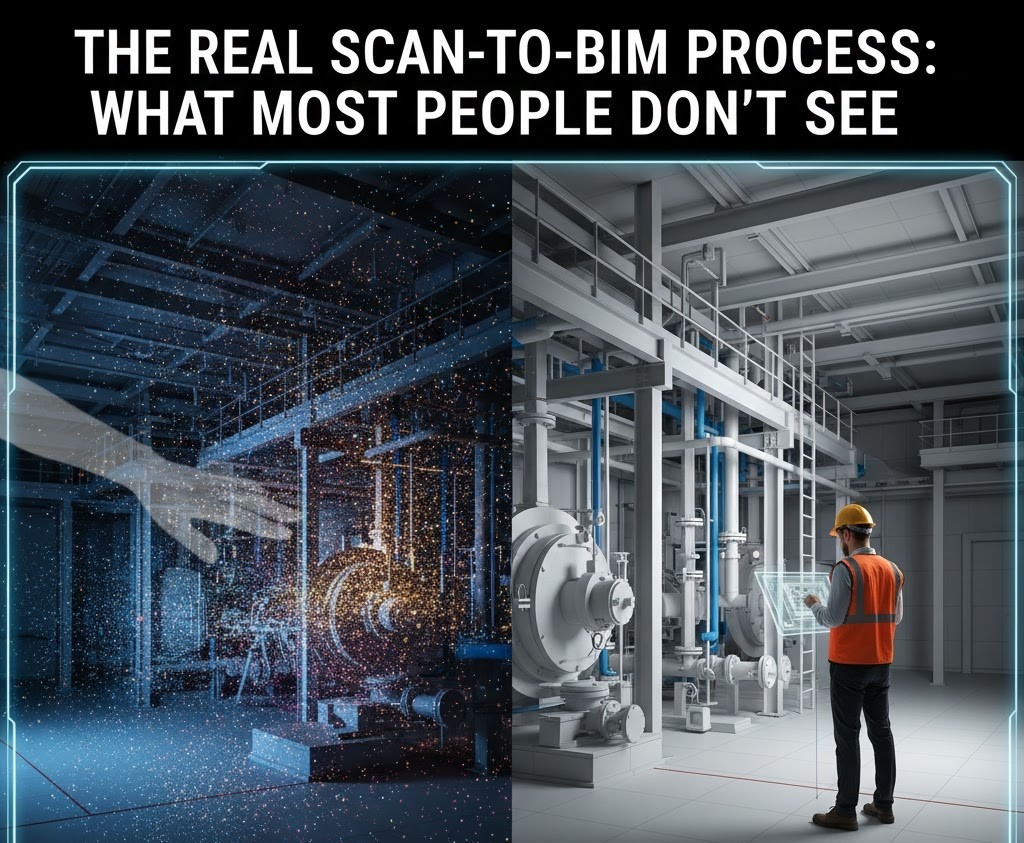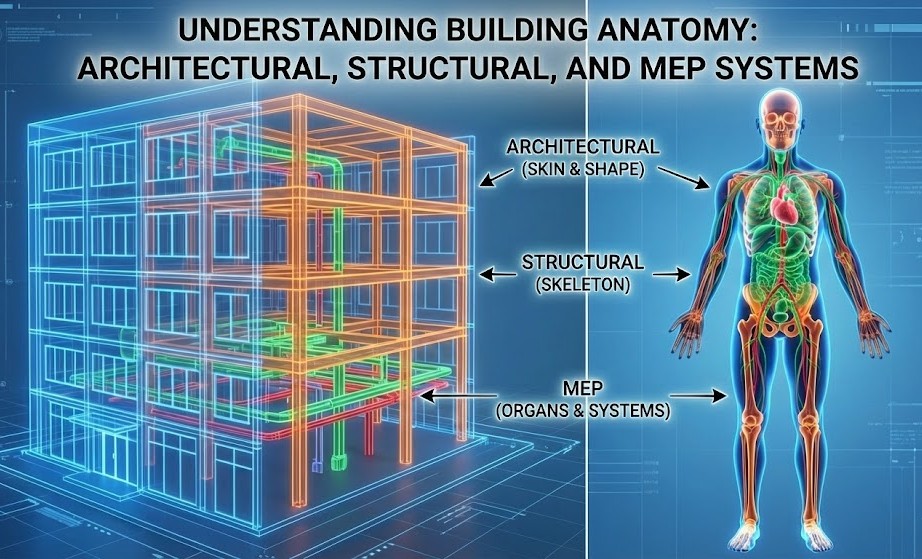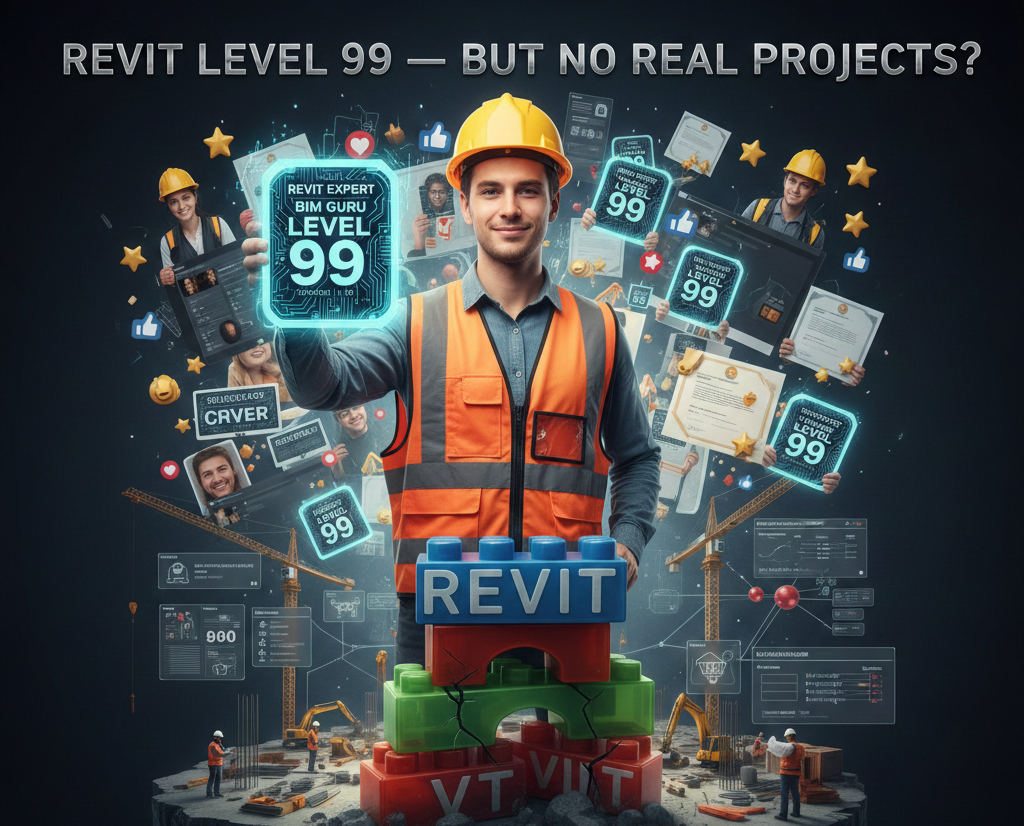
Author: Devika R
October 8, 2025
7 min read
Construction projects are complex ecosystems of architects, engineers, contractors, and clients. At their core, they thrive on trust, communication, and collaboration — the very elements that sustain relationships. When these break down, projects face delays, cost overruns, and conflict
Building Information Modeling (BIM) is often seen as a technical solution — LOD levels, Revit workflows, clash detection, or coordination meetings. But beyond technology, BIM is a framework that instills transparency, fosters collaboration, and prevents mistrust.
In this blog, we explore how BIM can help prevent project betrayal, reduce ego-driven conflicts, and strengthen collaboration — transforming toxic project cultures into high-performing teams.
1. Communication: The Foundation of Every Relationship (and Every BIM Model)
Effective communication is the foundation of any relationship — personal or professional. In relationships, silence often leads to assumptions, misunderstandings, and resentment. Similarly, in construction projects, poor communication can create chaos:
- Architects make design updates, but engineers are unaware.
- Contractors continue working on outdated plans.
- Emails and messages get lost in endless threads.
- Deadlines slip, costs increase, and conflicts escalate.
How BIM solves communication gaps:
- Shared Digital Models: BIM provides a centralized 3D model that all stakeholders access in real time. Everyone sees updates and changes instantly.
- Clash Detection: Automated clash detection prevents conflicts before they occur, saving time and money.
- Single Source of Truth: Project data is consolidated in a Common Data Environment (CDE), ensuring that no stakeholder works on outdated information.
“BIM doesn’t just connect data — it connects people.”
Example: On a multi-disciplinary hospital project, BIM allowed architects, MEP engineers, and contractors to identify a critical duct-routing clash in the design phase, preventing delays and costly rework.
2. Betrayal in Projects: The Hidden Cost of Mistrust
Betrayal in construction occurs when stakeholders hide mistakes, withhold information, or fail to coordinate. Even small lapses in transparency can escalate into major project setbacks. The consequences often include:
- Rework and increased costs
- Delays and missed deadlines
- Damaged client trust
Traditional workflows, relying on 2D drawings, fragmented communication, and disconnected systems, make it easy for these “betrayals” to go unnoticed. Misunderstandings, outdated versions, and missed updates can quietly derail timelines and budgets, often only surfacing when problems become critical.
BIM enforces accountability and transparency:
- Every change is logged with timestamps.
- Decisions and updates are fully traceable.
- Responsibility is clearly distributed across all project stakeholders.
This traceability ensures that no one can silently sabotage the project, and every issue is visible before it escalates. Teams collaborate openly, and trust becomes measurable — not assumed.
Example: On a commercial tower project, a structural engineer detected a misaligned beam through BIM before construction began. This early detection prevented costly rework, avoided project delays, and preserved client confidence, highlighting how BIM protects both project integrity and stakeholder trust.

3. The Narcissism Problem: When Ego Overshadows Collaboration
Every construction project faces the challenge of ego-driven mindsets. Some individuals may prioritize their own discipline over the overall project goals, creating friction and misalignment. Architects often focus on design aesthetics, engineers emphasize structural integrity, and contractors concentrate on cost efficiency. When each stakeholder works in isolation, silos form, communication breaks down, and project timelines and budgets are at risk.
BIM promotes humility and interdependence:
- Visualizing the entire project in a shared model shows how each discipline impacts others.
- Architects see how their design affects MEP systems; engineers understand spatial constraints; contractors plan efficiently.
- Collaboration replaces competition, and empathy guides decision-making.
Example: On a complex airport expansion project, BIM allowed real-time coordination between structural and MEP teams, reducing clashes and ensuring smooth project delivery.

4. Trust Is the Core of BIM — and Relationships
In construction, trust is built on consistency, transparency, and shared responsibility. Without trust, projects face miscommunication, delays, and costly errors. BIM reinforces trust by creating a shared digital environment where every stakeholder can see updates in real time, understand dependencies, and collaborate effectively, ensuring that decisions are based on accurate information rather than assumptions.
BIM ensures trust through:
- Consistent Model Accuracy: Everyone works on a validated model.
- Transparent Workflows: Changes and updates are visible to all stakeholders.
- Shared Accountability: Decisions are traceable, and errors can be corrected collaboratively
Using Common Data Environments (CDEs) and adhering to ISO 19650 standards, teams ensure that trust is embedded in every project phase. No surprises, no blame games — just coordinated execution.

5. Healing the “Toxic Project Culture” Through BIM
Many construction projects still operate in hierarchical, siloed environments, similar to toxic relationships where one person dominates. BIM disrupts this culture:
- Democratic Decision-Making: Every stakeholder has access to the same information.
- Data-Driven Insights: Decisions are based on real-time data, not assumptions.
- Transparency: Miscommunications are minimized, and issues are addressed proactively.
By adopting BIM workflows, organizations can break the cycle of mistrust and build a culture of collaboration, accountability, and empowerment.
Example: A mixed-use development in Dubai reduced construction conflicts by 70% after adopting BIM for coordination and project management.

6. The Relationship Lesson: Grow Together, Not Apart
Successful teams, like strong relationships, evolve together. Implementing BIM is not just about software — it’s about fostering collaboration, trust, and transparency.
Key elements:
- Training: Learn BIM software, workflows, and ISO 19650 standards.
- Patience: Adapt to new collaborative norms.
- Openness: Share information and feedback for mutual trust.
The results include:
- Enhanced collaboration and communication
- Reduced errors and rework
- Strengthened trust among project stakeholders
At BIM Cafe Learning Hub, we go beyond software training. We teach professionals to coordinate, collaborate, and communicate effectively, embedding trust into every project.
“You can’t build trust overnight — but with BIM, you can build it into every model.”

Final Thoughts: When Data Meets Emotion
In construction, as in human relationships, the health of a project depends on trust, communication, and accountability. Just as relationships fail when trust is broken, construction projects falter when stakeholders operate in silos, with fragmented information or hidden agendas.
BIM goes beyond being a software tool — it is a philosophy of collaboration, transparency, and shared responsibility. It transforms projects by:
- Embedding trust in workflows: Each design change, decision, or clash resolution is logged and visible to all stakeholders. This transparency ensures that everyone is accountable and aligned.
- Facilitating empathy through visualization: When stakeholders can see how their work affects the entire project — from structural beams to MEP systems — they appreciate interdependencies and collaborate more effectively.
- Reducing conflicts before they arise: Clash detection, version control, and shared data environments ensure errors are addressed early, minimizing rework, delays, and cost overruns.
- Promoting a culture of learning and growth: Teams evolve together, adapting to new standards, workflows, and technologies, which fosters continuous improvement and mutual respect.
Ultimately, BIM is not just about modeling buildings — it is about modeling relationships, accountability, and collaboration. Great buildings, like great teams, are constructed not only from concrete and steel but from trust, understanding, and open communication.
“Think of BIM not as software, but as a philosophy — where data meets human collaboration, and every model tells a story of trust and teamwork.”
About BIM Cafe Learning Hub
BIM Cafe Learning Hub is more than a training institute; it is a center for building digital collaboration skills in architecture, engineering, and construction. As an Autodesk Certified Partner, BIM Cafe bridges the gap between theoretical knowledge and real-world project execution.
Key pillars of BIM Cafe Learning Hub:
- Project-Oriented Training: Courses are structured around real-world construction scenarios, ensuring that learners not only understand software but also apply BIM principles to collaborative project workflows.
- Global Standards: Training follows ISO 19650, BIM Level 2/3 workflows, and industry best practices to prepare students for international standards and expectations.
- Hands-On Experience: Learners engage with actual BIM models, coordination tasks, and clash detection exercises, building skills that are immediately transferable to professional projects.
- Placement and Industry Partnerships: BIM Cafe collaborates with leading BIM firms, ensuring graduates have direct pathways to employment and mentorship.
- Holistic Skill Development: Beyond technical proficiency, BIM Cafe emphasizes communication, coordination, and stakeholder engagement — the soft skills critical for collaborative project success.
Whether you are an architect, engineer, or construction professional, BIM Cafe Learning Hub equips you to integrate trust and collaboration into every project, fostering not just technical excellence, but a culture of teamwork and transparency.
Discover our full range of BIM courses and professional programs: Courses and programs




